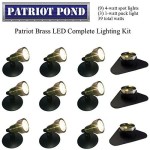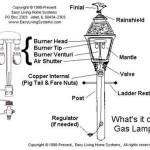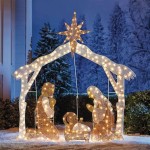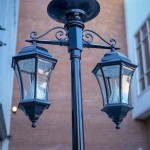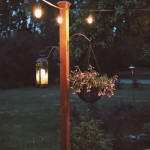How to Wire an Outdoor Junction Box
Outdoor junction boxes are essential components in electrical systems, providing a safe and weatherproof enclosure for connecting wires and protecting them from the elements. Whether you're installing outdoor lighting, landscaping features, or expanding your electrical system, understanding how to wire an outdoor junction box is crucial for ensuring a safe and functional installation.
This article provides a comprehensive guide on wiring an outdoor junction box, covering essential steps, safety precautions, and proper techniques. By following these instructions, you can confidently connect wires and create a secure and reliable electrical connection.
1. Gather Your Materials and Tools
Before starting the wiring process, gather all your necessary materials and tools. This will streamline the project and prevent delays. The required materials and tools typically include:
- Outdoor junction box (with appropriate size and rating)
- Electrical wire (with the correct gauge and type for the application)
- Wire strippers
- Wire cutters
- Crimping tool (for wire connectors)
- Wire connectors (appropriate size for the wire gauge)
- Voltage tester
- Screwdriver
- Safety glasses
- Work gloves
- Tape measure
- Marker or pencil
It is essential to choose an outdoor junction box that meets the specific requirements of the electrical system and the environment. Factors to consider include the size, rating, and weatherproof rating of the junction box.
2. Prepare the Junction Box and Wires
Once you have gathered all the materials and tools, prepare the junction box and wires for connection. Begin by:
-
Disconnecting power:
Turn off the power to the circuit you are working on at the breaker box. Double-check with a voltage tester to ensure the circuit is de-energized. -
Cleaning the junction box:
Clean the inside of the junction box thoroughly to remove any debris or contaminants. This will ensure a clean and secure connection. -
Stripping the wire ends:
Using wire strippers, remove a small portion of insulation from the ends of each wire. The amount of insulation to remove will vary depending on the type of wire connector used.
It is essential to work on de-energized circuits for safety. Always double-check with a voltage tester before working on any electrical wiring.
3. Connect the Wires
With the junction box and wires prepared, connect the wires according to the electrical code and proper wiring practices. Follow these steps:
-
Identify the wires:
Determine the hot, neutral, and ground wires. Hot wires are typically black, neutral wires are white, and ground wires are green or bare copper. -
Connect the wires to the junction box terminals:
Connect the appropriate wires to the terminals inside the junction box. Ensure that the wires are securely connected to the terminals. -
Use wire connectors:
If necessary, use wire connectors to join multiple wires together. Ensure that the connectors are appropriate for the wire gauge and that they are properly crimped. -
Secure the wires:
Once the wires are connected, ensure they are securely fastened inside the junction box. Use the provided clamps or other methods to keep the wires organized and tension-free.
It is important to follow local electrical codes and regulations when wiring an outdoor junction box. Familiarize yourself with the appropriate code requirements for your area. Always double-check the connections and ensure that all wires are securely connected before restoring power.
4. Seal and Mount the Junction Box
After connecting the wires, seal and mount the junction box. Tighten all screws and bolts, and use appropriate sealant or caulk to protect the box from moisture and weather. Follow these steps:
-
Apply sealant:
Apply sealant around the edges of the cover and any entry points to prevent water from entering the box. -
Secure the cover:
Secure the cover of the junction box using the provided screws or bolts. Ensure that the cover is tightly sealed. -
Mount the junction box:
Mount the junction box to the desired location using appropriate screws, brackets, or other mounting methods. Ensure that the box is securely mounted and level.
By following these steps, you can create a safe and effective installation of an outdoor junction box. Remember to always prioritize safety and follow all applicable electrical codes and regulations.
It is recommended to consult with a qualified electrician if you are unsure about any aspect of wiring an outdoor junction box or if you are working on a complex electrical system. They can provide expert guidance and ensure a safe and proper installation.

Install An Electrical Junction Box With Three Phase Wiring At Outdoor Garden

Outdoor Junction Box For Armoured Cable 1st Electricians
How Do I Install Outdoor Junction Box Diy Home Improvement Forum

Buried Junction Boxes Doityourself Com Community Forums

How To Size A Junction Box Polycase

Terminal Box Vs Junction The Ultimate Comparison Kdm Fabrication

Surface Mount Junction Box For Exterior Light Greenbuildingadvisor

25 Junction Box Outdoor Waterproof Electrical 3 Way Plug Line Plastic External M25 Coaxial Wire Connector Electric Power Cord Boxes Suitable For Lights Landscape Lighting 3way Intshade

Diy Watertight Junction Box For Serious Outdoor Sealing Aday

Half Buried Junction Box Doityourself Com Community Forums

